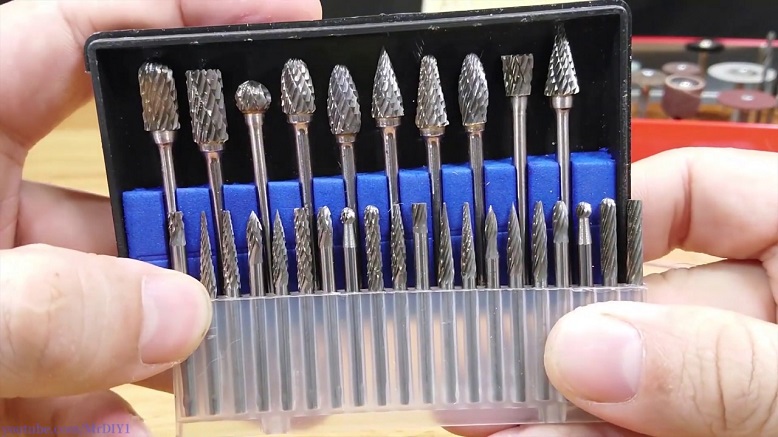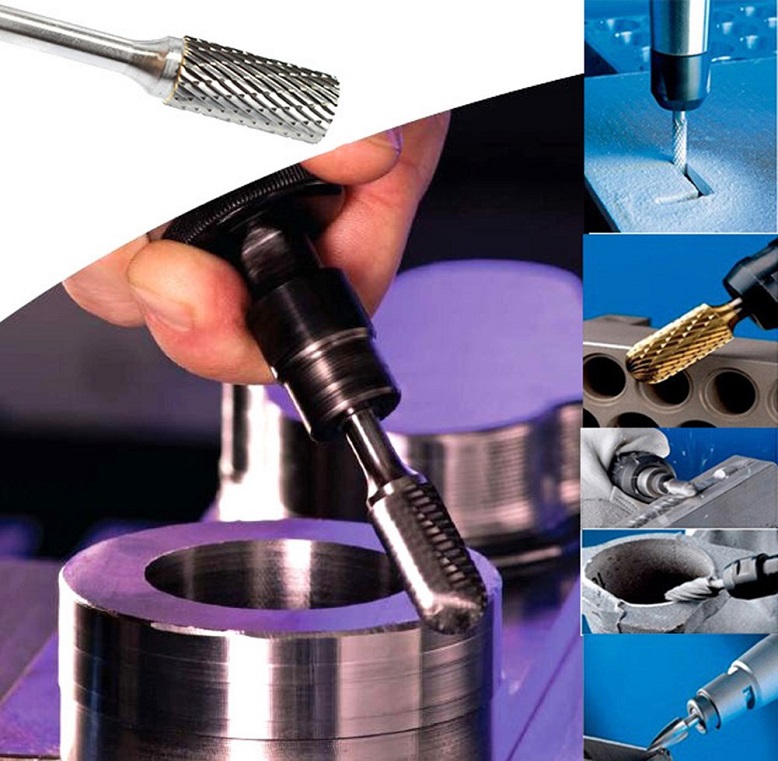 |
| Source: youtube.com |
Getting rid of stuff that you don't need can go multiple ways, you either donate, leave it in the garbage or give stuff to a friend. But when it comes to working with metal, the material you don't need on a much smaller scale can be removed thanks to rotary burrs. These rotating tools are used to get rid of metal that is in your way, which makes them especially useful when welding.
Rotary burrs are able to manipulate the material you're working on by rotating at a very high speed. This makes them great for deburring, enlarging, and shaping. A rotary bur can also be used in other metal fabrication processes such as tool making, jewelry making, sculpting, model engineering and more. Hence why there are a lot of rotary burrs to choose from.
What to Look for in Rotary Burrs
 |
| Source: lazada.sg |
Shank Size
Since there is a wide range of rotary burrs, you can't just go around looking for the one that just looks fit for your fabrication needs. There are certain factors that will determine the type of rotary burr you need with the shank size being one of them. The shank size of all burr cutters is important as it determines whether or not the burrs themselves are compatible with the tool you're using. Usually, there are two shank sizes 6 mm and 3 mm ones.
HSS vs Tungsten Carbide
Typically you'll see metal fabrication bur cutters being made from either tungsten carbide or HSS (High Strength Steel). Carbide burrs are the proffered one when working with metal as they are extremely hard and don't wear out as much when use don more demanding projects. HSS burrs, on the other hand, are less tolerant to heat and can soften under high temperatures. Tungsten carbide burrs are the recommended burrs even when you're a beginner.
Number
When purchasing any kind of burr it's important to check the number of pieces you're getting in the box. The same way you get drill bits, you also get rotary burrs as you won't always rely on the same size burr. Different projects will require different size burr cutters. Make sure you get enough burrs to make your metal fabrication more versatile.
Speed
The speed at which you'll use a rotary burr will be determined by its size and the material it's made of. To avoid encountering any issues make sure to either contact the manufacturer of the burr for recommendations for the correct RPM or check for the information on the packaging. Usually, you need to start off at a slower speed and then increase it as you spend more time working on a project.
Cuts
There are two types of burrs when it comes to cuts, single and double-cut rotary burrs. If you want to be able to remove material quickly and end up with a smooth finish then go for single-cut burrs. They are suitable for milling, deburring, and removing heavy stock material. If you do not work with metal and instead enjoy working with wood and plastics go with a double-cut burr.
These burrs are also known as cross-cut or diamond-cut as they have two flutes cutting across each other. You can also use double-cut burrs for soft metals to such as soft steel, aluminium as well as ferrous and non-ferrous metals. Double-cut burrs make for smaller chips when used hence why they are able to produce a smoother finish than single-cut burrs
Other Types of Burrs
 |
| Source: ubuy.by |
Tear
A tear burr is used when a part is deformed instead of being completely cut which is why they are also known as side-burrs. Tear burrs are most commonly used when there is a sharp, jagged edge along the contours of a punched hole which mainly occurs from a punching process.
Cut-Off
With a cut-off burr, you're able to remove leftover material that happened as a result of a part that was cut separates from the main bit (part). Cut-off burrs are mainly used for saw cuts or automatic screw machine parts.
Roll-Over
A roll-over burr cut is one that can remove bent or severed pieces from a cutter's path. When you're working with cutting tools, they can leave some material behind which can end up rolling and go along with the tool. The material can fold towards where the feed is as well as along the cut edge. With a malleable enough material the chip won't even separate easily.
Poisson
The name of this burr is from the term Poisson effect which refers to the deformation of a certain material in a perpendicular way to the direction of loading. This is why Poisson burrs are made to manipulate material that has its edges deformed or elongated. The point of this cutting tool strikers the part's edge which allows it to deform it to a more cleaner finish thanks to the burrs shearing and compressive forces.
Comments
Post a Comment